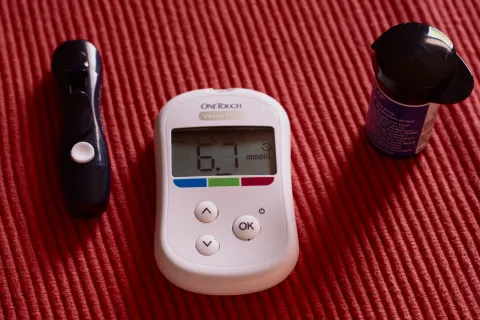Reducing Anxiety in the ER
Today’s “Got Questions?” answer comes from James Perrin, MD, director of the Autism Treatment Network’s Clinical Coordinating Center at Massachusetts General Hospital and the federally funded Autism Intervention Research Network on Physical Health, as well as a professor of pediatrics at Harvard Medical School.

What can I do to make the emergency room experience less traumatic for my child with autism?
This is a great question and one we are addressing with a study funded through the Autism Intervention Research Network on Physical Health (AIR-P). We’re particularly eager to tackle this issue because we know from parents how stressful an emergency room visit can be for a child, adolescent or adult with autism.
Many times, parents tell us that the ER doctors and nurses don’t understand the sensitivities and communication difficulties associated with autism. Clearly, this makes it more difficult for parents to manage their child during ER procedures that would be frightening for anyone. Similarly, sitting in the ER waiting room for hours is trying – especially so for someone with autism.
Here are some of the issues that we know contribute to the problem.
- By their nature, ERs can prove extremely chaotic, with bright lights and loud noises and people rushing in and out. The atmosphere can raise anxiety in anyone – especially those with sensory sensitivities.
- Many individuals with autism have one or more related medical conditions such as epilepsy or a gastrointestinal disorder. This can make visits to the ER more frequent.
- Many ER doctors and nurses lack sufficient understanding of autism, though this is changing. As a result, they may misinterpret autism-related behaviors. They may not know how to communicate with or otherwise help someone with autism cope with painful or scary procedures such as blood draws and X-rays.
To meet these challenges, we’re conducting studies at two of our Canadian Autism Treatment Network (ATN) centers – in Edmonton and Toronto. The study teams will interview a variety of doctors, nurses, other ER staff, hospital administrators, community physicians and ATN specialists as well as parents and their children. We want to know what they think is not working for ER patients with autism. We likewise want to know their opinions on what can make the ER visit a more positive experience. Certainly, we expect to learn more about the challenges I mention above. We also expect to learn about problems that haven’t yet occurred to us.
We plan to develop a series of recommendations for improving ER care for those with autism. Based on the results, we will publish articles in medical journals and provide reports to hospital administrators, policy makers and medical associations. We also hope to create an ATN tool kit for families.
For now, I can offer the following helpful advice for parents:
- Talk with your pediatrician and/or behavioral therapists about how to prepare your child or other loved one for an ER visit. Advance planning can help ease stress when the time comes. This is particularly important if your child has a related medical condition that makes ER visits more likely.
- One way to help prepare is to use visual supports to create a social storybook about an ER visit. Going over the experience – step by step – can help familiarize the experience. This, in turn, can lower anxiety when the time comes.
- When in the ER, speak up for your loved one’s special needs. For instance, you can say, “When faced with this type of situation, I know the best things to calm my child are X, Y and Z.” While we all need to be respectful of the ER staff, sometimes it’s appropriate to be assertive.
- Consider calling ahead to alert the ER that you’re bringing an individual with autism. Ask if they can prioritize you or find a quieter place for you to wait your turn.
- Remember to bring those special “comfort” items that will help your loved one cope.
The good news is that more and more ER physicians and staff are becoming educated about autism and how best to communicate with and help someone on the spectrum. Through the ATN and the AIR-P, we continue to foster this awareness. We know we can do even better.
Got more questions?
Please send them to GotQuestions@autismspeaks.org.








